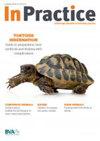检测进口犬寄生虫的实用方法
IF 0.3
4区 农林科学
Q4 VETERINARY SCIENCES
引用次数: 0
摘要
背景:尽管发生了 Covid-19 大流行和英国脱欧事件,但进口到英国的狗的数量仍然居高不下。同时,全球寄生虫分布受多种因素影响,进口宠物感染外来寄生虫的可能性也在增加。因此,对外来寄生虫感染的早期诊断非常重要,这不仅适用于有临床症状的狗,也适用于亚临床携带者。检测出感染后,我们就可以最大限度地减少潜在的人畜共患病风险,计划治疗任何存在的病原体,并维护英国的生物安全:本文概述了进口犬可能感染的主要寄生虫的临床症状和检测方法。本文章由计算机程序翻译,如有差异,请以英文原文为准。
Practical approach to testing the imported dog for parasites
Background: Despite the Covid-19 pandemic and Brexit, the number of dogs being imported into the UK remains high. At the same time there are a variety of factors driving global parasite distributions, increasing the likelihood that imported pets will be infected with exotic parasites. Therefore, early diagnosis of exotic infections is important, both in dogs with clinical signs but also those that are subclinical carriers. Detecting infections allows us to minimise the potential zoonotic exposure, plan for treatment of any pathogens present and maintain UK biosecurity.
Aim of the article: This article summarises the clinical signs and testing options for the key parasites that imported dogs may be infected with.
求助全文
通过发布文献求助,成功后即可免费获取论文全文。
去求助
来源期刊

in Practice
农林科学-兽医学
CiteScore
0.80
自引率
0.00%
发文量
111
审稿时长
18-36 weeks
期刊介绍:
In Practice is published 10 times a year and provides continuing educational material for veterinary practitioners. It includes clinical articles, written by experts in their field and covering all species, providing a regular update on clinical developments, and articles on veterinary practice management. All articles are peer-reviewed. First published in 1979, it now provides an extensive archive of clinical review articles.
In Practice is produced in conjunction with Vet Record, the official journal of the British Veterinary Association (BVA). It is published on behalf of the BVA by BMJ Group.
 求助内容:
求助内容: 应助结果提醒方式:
应助结果提醒方式:


